What is acne scarring?
The term "scarring" refers to a fibrous process in which collagen it is placed to heal a full thickness injury. It affects 30% in people with moderate or severe acne vulgaris. It is particularly common in nodulocystic acne, acne conglobata, and fulminant acne. It can also be a long-term consequence of childhood acne.
To reduce the possibility of scarring, seek treatment for your acne early. Severe acne can often be cured.
Acne scars
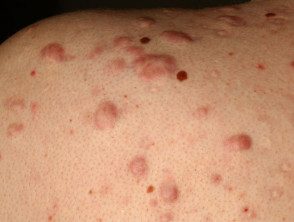
Acne scars
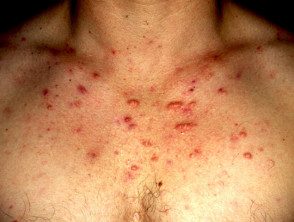
Acne scars
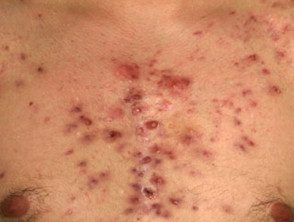
Acne scars
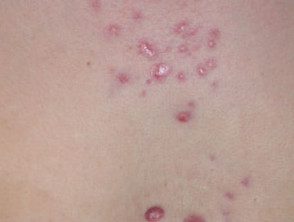
Acne scars
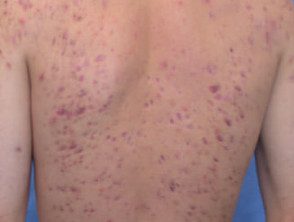
Acne scars

Acne scars
What are they post-inflammatory color changes?
Postinflammatory color changes are observed after inflammatory Acne lesions have recently healed.
- Post-inflammatory erythema - flat patches of pink or purple
- Post-inflammatory pigmentation - brown marks (pigmentation), seen in people who can easily tan
- Post-inflammatory hypopigmentation - White marks
Post-inflammatory color changes improve over time, but it can take many months for them to fully resolve.
Post-inflammatory color changes in acne.
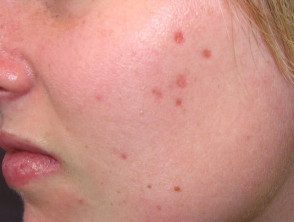
Pink marks
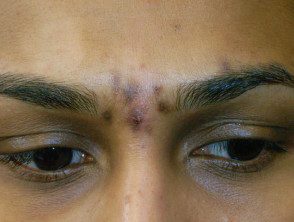
Brown marks
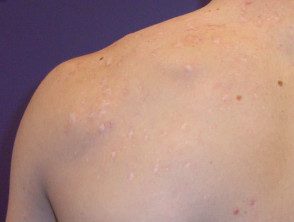
White marks
What is the treatment for post-inflammatory pigmentation?
Treatments for post-inflammatory pigmentation include:
- Careful sun protection: Although inflammatory acne lesions may improve, brown marks darken with sun exposure. Apply a broad-spectrum oil-free sunscreen and wear a wide-brimmed hat when outdoors
-
Azelaic acid cream - this reduces pigmentation and effectively treats mild to moderate acne
-
Hydroquinone whitening creams: these inhibit the enzyme tyrosinase that causes tanning (see melasma)
- Superficial chemical peels containing glycolic acid or Jessner solution.
What are the characteristics of persistent scars?
Unfortunately, true acne scars never completely go away, although their appearance generally improves over time. They can be disguised with makeup (cosmetic camouflage).
The following types of scar occur in acne:
- Ice pick scars: these are deep, narrow and pitted scars
- Rolling Scars - Wide Depressions with a Slanted Edge
- Wagon Scars - Wide Depressions with Sharp Edges
- Atrophic scars: flat, thin, or depressed scars (anetoderma)
- Hypertrophic Keloid Scars: Lumpy and lumpy scars.
Acne scars
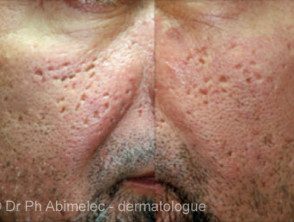
Acne scars

Ice pick scars
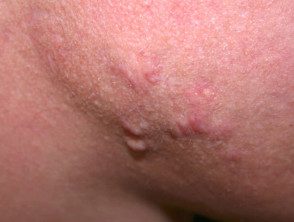
Hypertrophic scars
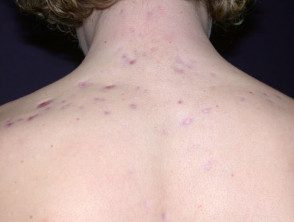
Atrophic scars

Acne scars
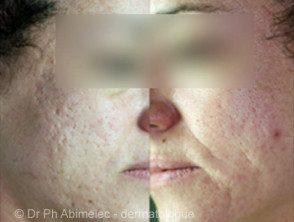
Rolling acne scars
How are acne scars treated?
Ice crushers and wagon scars
- Dermabrasion
- To be resurfacing
- Drilling graft for deep scars
-
TCA CROSS (Chemical Reconstruction of Skin Scars) uses precisely placed 50-100% trichloroacetic acid
-
Subcision®: a surgical technique in which the fibrous band under the scar is divided, allowing the skin to return to its normal position
- Larger scars can be removed (cut) and closed to form a scar in a thin line
Atrophic and rolling scars
- Soft fabric increase Techniques such as hyaluronic acid, collagen, gelatin matrix and fat implants.
- Dermabrasion
- Skin puncture
-
Laser rejuvenation (Er: YAG and ablative fractional laser)
Hypertrophic scars
- Powerful current steroids applied under occlusion to the scar for a few weeks
-
Intralesional steroid injections into the body of the scar.
- Silicone gel Dressings applied 24 hours a day continuously for a few months.
- Skin puncture
- Cryotherapy (freezing)
- Surgical review
Unfortunately, hypertrophic or keloid scars are particularly prone to recur even after apparently successful treatment.

